For those who want to travel and experience 11 regions of the Philippines without having to leave Manila, then you should visit the IG-worthy Lakbay Museo. Prior to its official opening to the public on July 12, we were allowed a sneak preview of this unique and new destination in the Metro. Describing itself as the “first PH interactive millennial museum,” it is sort of a Nayong Pilipino for the Instagram generation.
A project of The Millennial Concept Factory Inc., headed by President Lawrence Li Tan, Lakbay Museo offers, in one massive space, a chance for young Filipino millennials to travel across the Philippines, within 2 hours inside the museum, discovering and revisiting many of the Philippines’s best vacation spots, and know more of the country’s unique history, food, music, arts and culture by immersing themselves its festivals, fashion and food, all without having to spend days of traveling and a lot of money to Luzon, Visayas and Mindanao.
At the entrance, we were welcomed by staff wearing traditional Filipino attire. Before we entered the museum, we were dressed up, in original Pinoy fashion, with authentic handwoven fabrics with colorful designs. A display on the museum lobby asks “Paano ka maglalakbay?”
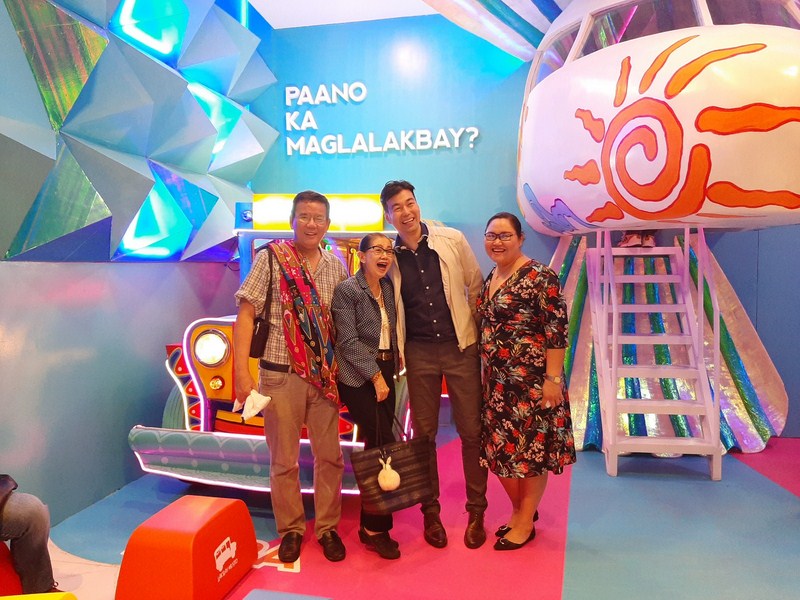
L-R: the author, Ms. Maria “Nini” Ravanilla (former Regional Director of DOT Bicol Region), Mr. Lawrence Li Tan (President of Millenial Concept Factory, Inc.) and Ms. Karla Del Castillo (Lakbay Museo Manager). Behind is the jeepney and at right is the stairs leading up to the airplane and its slide.
To enter the museum, we were given the choice of entering via a vinta, hopping on a distinctly Filipino jeepney (with all its vibrant colors, airbrushed designs and all sorts of décor), or climbing a unique airplane display (where you slide down to enter the gallery), a reminder of the many options for traveling around the Philippines —by land, water or air.
The museum, boasting 1,000 square meters, is filled with interesting portals, displays and interactive stations which you can explore and experience through different senses.
They are adorned with eye-catching installations and shining in vibrant lights that draw attention across the floor, highlighting the best destinations in the Philippines (Mayon Volcano in Albay, Magellan’s Cross in Cebu, etc.), all worthy of the very 21st-century practice called Instagram.
The well-trained guides, found all over the museum, are always ready to talk to and entertain you as you go around, offering a myriad of interesting facts about the country.
The museum is divided into 11 areas – Ilocos Region (Region I), Cagayan Valley (Region II), Central Luzon (Region III), National Capital Region, Southern Tagalog (CALABARZON and MIMAROPA), Bicol Region (Region V), Western Visayas (Region VI), Central Visayas (Region VII), Eastern Visayas (Region VIII), Cordillera Administrative Region, and the whole island of Mindanao.
Lakbay Museo also offers 14 unique experiences including balancing a stack of rubber palayoks on top of your head or swimming in a giant rice bowl; plus 10 freebies for tasting experiences such as sampling native delicacies and tasting lambanog and fruit wine (for adults only).
At the Luzon Exhibit, you’ll find Luzon’s gorgeous traditional houses (Batanes’ Ivatan house, the Ifugao bale made with zero nails, etc.) and festivals.
The life-size display of the gorgeous Pahiyas Festival, a colorful celebration in Quezon Province of the region’s bountiful harvest, features kiping (colorful decorations made from dried rice paste) used for decorating the houses alongside various fruits, vegetables and flowers.
The miniature display of a replica of Mayon Volcano, beside the equally famous miniature of the Cagsawa Ruins, is one of the highlights in the museum. A small tunnel, under the volcano, is filled with mirrors and lights you can play with, perfect for photo experiments and extraordinary shots (including doing an iconic “lava walk”).
The Visayas region, known for its beaches and seas brimming with life (we’re in the Coral Triangle, the world’s epicenter of marine biodiversity), showcases the Philippines’ one-of-a-kind underwater world.
Looking like it came out of Wonderland, a display of plastic waste, right above the underwater station, shows us that if we continue to pollute our waters, this natural wonder may soon be gone.
The amazingly vibrant and colorful Mindanao Exhibit display depicts the island’s dances, traditional instruments and local cuisines.
A section of Lakbay Museo is dedicated to a fabric collection of traditional textiles and original tapestries that comes with local stories and whose textures you can touch.
Created by actual ethnic and indigenous groups from all over the Philippines, it presents an artistic take on the colorful fabric of our country which includes the t’nalak from Lake Sebu and inabel from Northern Luzon. There are also over 120 synthetic mannequins wearing authentic Filipino fashion.
A full-blown production, the museum holds cultural performances, hourly all throughout the day, of traditional dances from Luzon to Mindanao, with dance troupes performing on the big stage (with a Sto. Nino Shrine backdrop) at the Eastern Visayas area.
They entertained us with familiar and unusual moves from many Filipino fiestas and celebrations with a live performance of the Pandanggo sa Ilaw, Tinikling, Cariñosa, Sayaw sa Bangko, Ifugao Kaloob dance and Maguindanao’s Sagayan.
The Lakbay Museo staff also surprised us as they randomly burst into dance. A puppet show also educates children on Philippine heritage.
Learning about Philippine culture is, of course, not complete without learning about the variety of dishes in the country, tasting the sour, sweet, salty, spicy, bitter and its other flavors by taking your taste buds on a journey with different Pinoy food and drinks.
Lakbay Museo, housing a large collection of Philippine staples has, literally on exhibit, over 600 known Filipino dishes in the collection.
A replica of Cebu’s famous Taboan Public Market displays an array of local fruits and dried fishes (palad from Samar, bisugo from Ilocos, labahita from Batangas, etc.). However, since what they have on display are just life-like replicas, you won’t end up smelling like tinapa.
For the full experience, you can smell the real deal inside sealed jars on shelves. They include different kinds of local vinegar with different strength levels (sukang Iloco, sukang paombong,etc.); delicious bagoong or shrimp paste (bagoong alamang, bagoong sisi, etc.); coffee beans and roasts (kapeng barako, kapeng alamid, etc.) and rice grain varieties (from the Ifugao’s Minaangan to the Mountain Province’s Ominio).
While most of the displays are replicas, you can also try some snacks using the 12 tokens that come free with the admission fee. Goodies normally cost from 1 -4 tokens each.
These, you can use to buy full meals (chicken adobo, arroz caldo, pancit lucban, sinigang, tinola, ginataang mais, etc.) and Pinoy street food (fish balls, quek quek, kakanin, sago gulaman, halo-halo, etc.) from the carinderia and chips, candies (Orange Swits, Stay Fresh, Haw Haw, Tarzan bubble gum, etc.), native treats and more from the sari-sari store. As Filipinos love sawsawan, you can try the local vinegar with their fish crackers.
Museo Lakbay, built on the foundation of environment conservation, aims to raise environmental awareness. Most of its displays were made from recycled materials such as 4,560 old and used rubber slippers, 328 old tires, 453 old car mats, plastic bottles, and a variety of other recyclable waste products and scrap materials.
The museum also provides job opportunities to the marginalized sectors of the society – out-of-school youth, non-professionals, disabled persons (PWDs) and senior citizens.
Local artists also lovingly handcrafted the thousands of realistic, life-size and perfectly flatlayed replicas of various market produce, multitude of fish species and a variety of vegetables and fruits on display. The quirky props, seemingly designed to appeal to social media users, include cute chairs around the stage that look like puto with cheese as well as benches that look like suman sa lehiya.
We ended our tour and exited the museum at the museum shop which sells local products and unique souvenir items (traditional toys, well-designed t-shirts, totes, etc.), in partnership with 189 micro, small and medium scale enterprises in the country.
Lakbay Museo, a perfect place to rediscover our Filipino identity in a fun learning environment, is unlike most museums (where you can’t touch anything) and lots of fun.
Here, we can climb up and play in the exhibits and there were lots of photogenic spots and areas, standing across many of the prominent tourist spots in the Philippines for photo ops.
It presents a showcase of unique experiences, from walking through replicas of iconic landmarks, tasting samples of regional cuisine, touching handwoven textiles, and taking part in traditional folk dances as you visit various portals and IG-ready stalls and learn about our roots and appreciate the richness and diversity of Philippine culture.
Lakbay Museo: Level 1, S Maison, Marina Way, Conrad Manila, Mall of Asia Complex, 1300 Pasay City. Open daily, 10 AM -10 PM (9 PM last tour). Admission: Php 799 (You get a P100 discount if you book online). Some sites (like MetroDeal) offer discounted rates. E-mail: mabuhay@lakbaymuseo.ph. Website: www.lakbaymuseo.ph. Facebook: Lakbay Museo PH. Instagram: @LakbayMuseoPH. S Maison is connected, via a covered walkway, to Mall of Asia. Tour starts every 15 minutes.

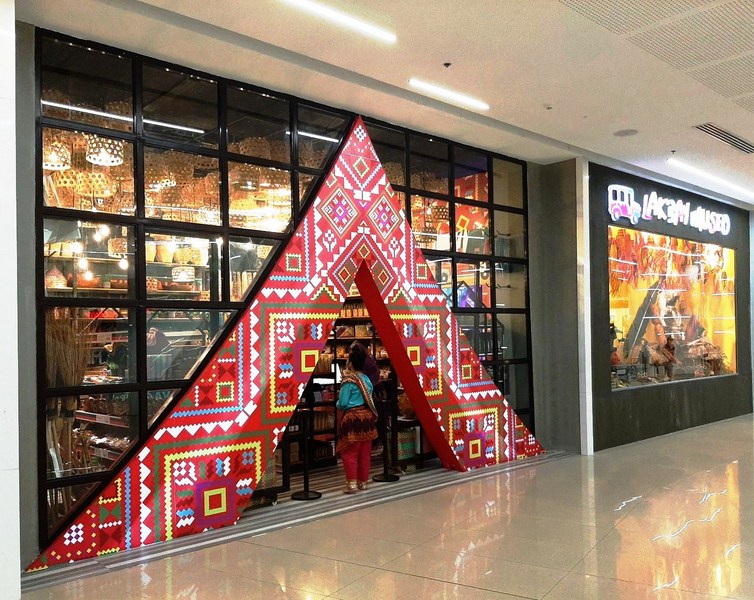
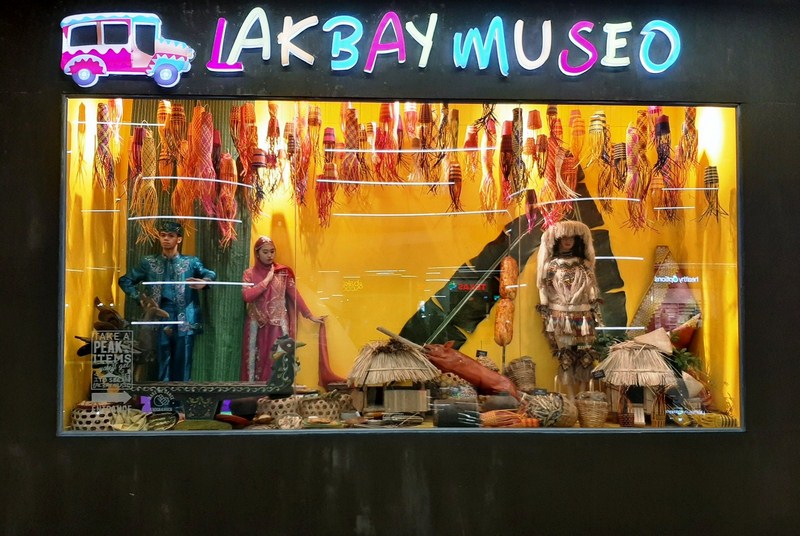
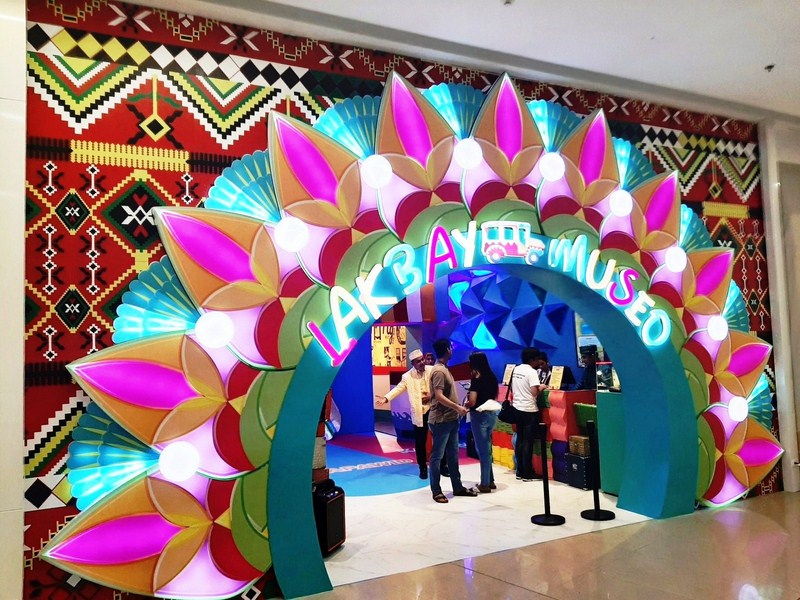
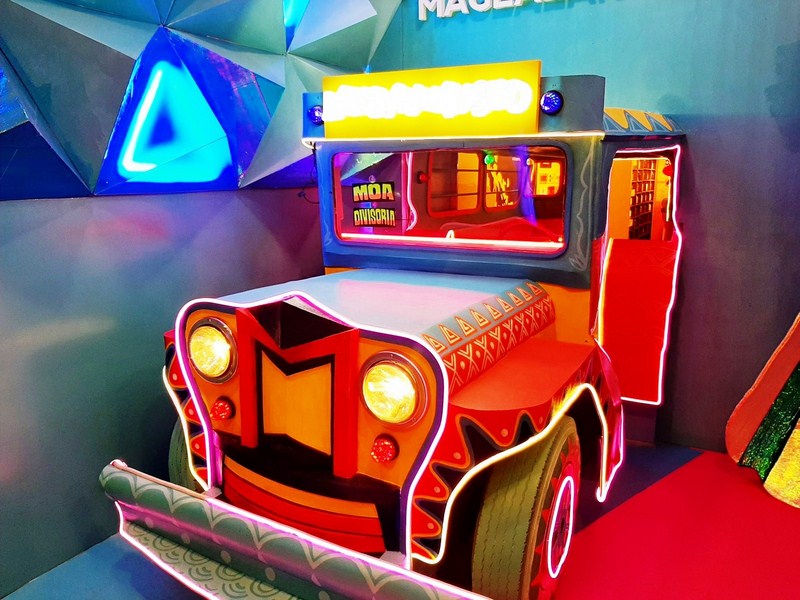
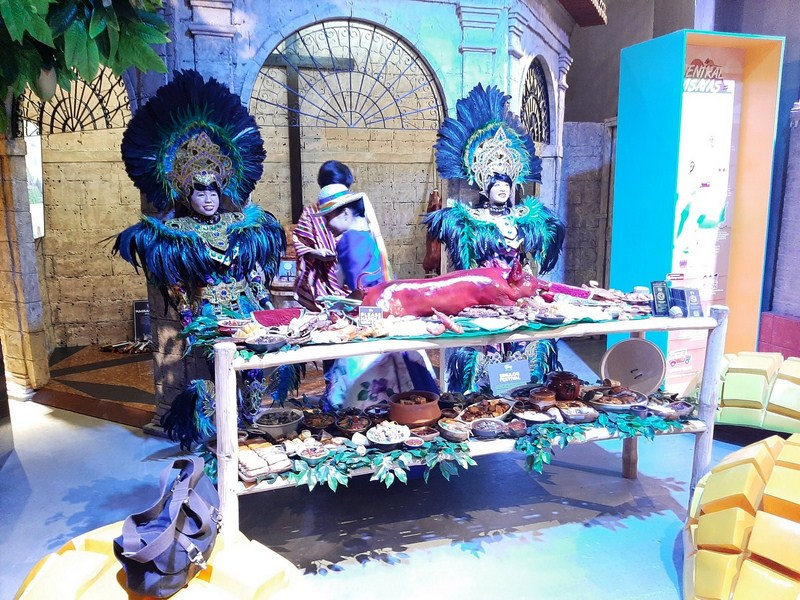
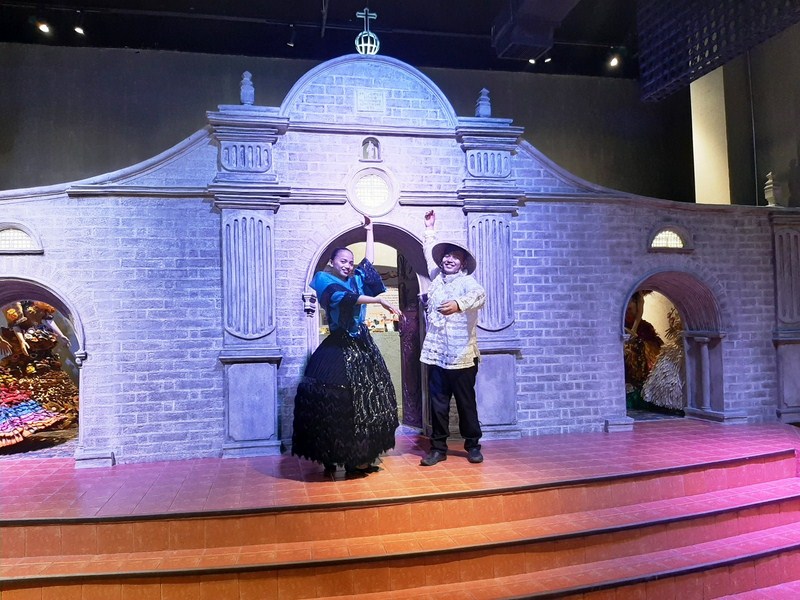
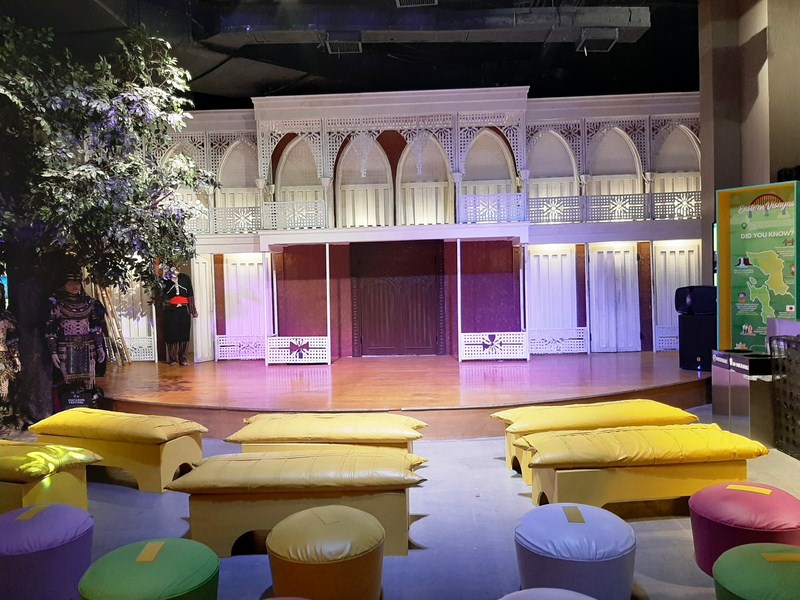
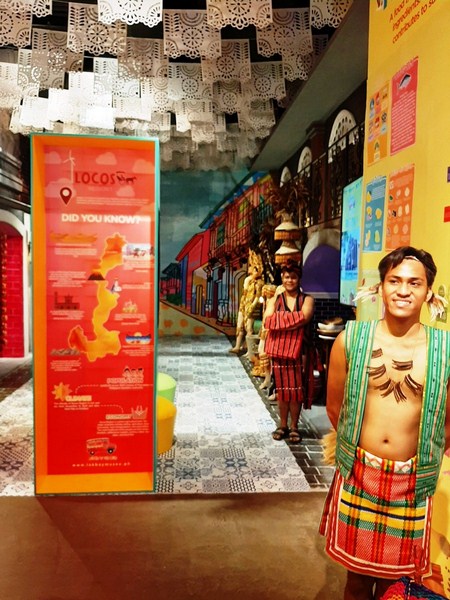
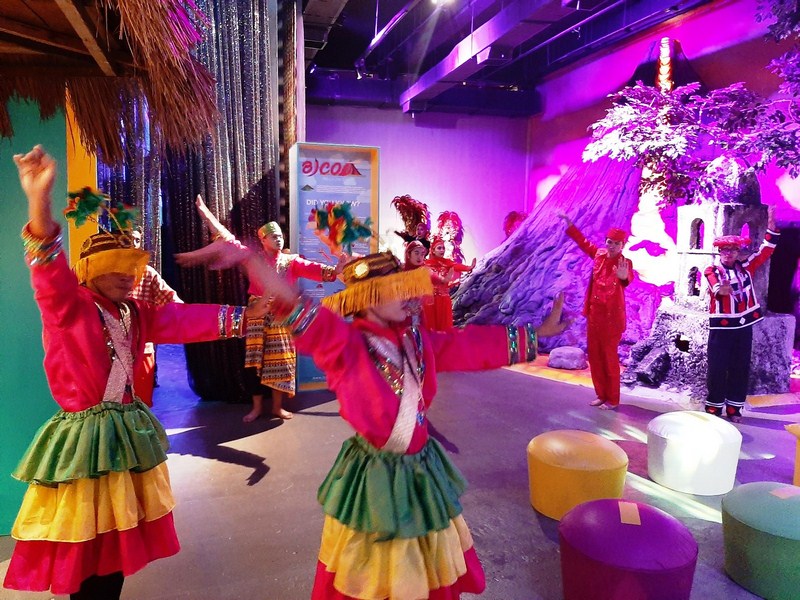
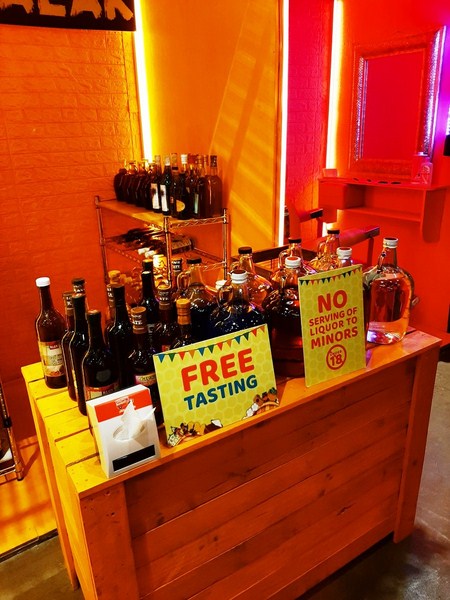
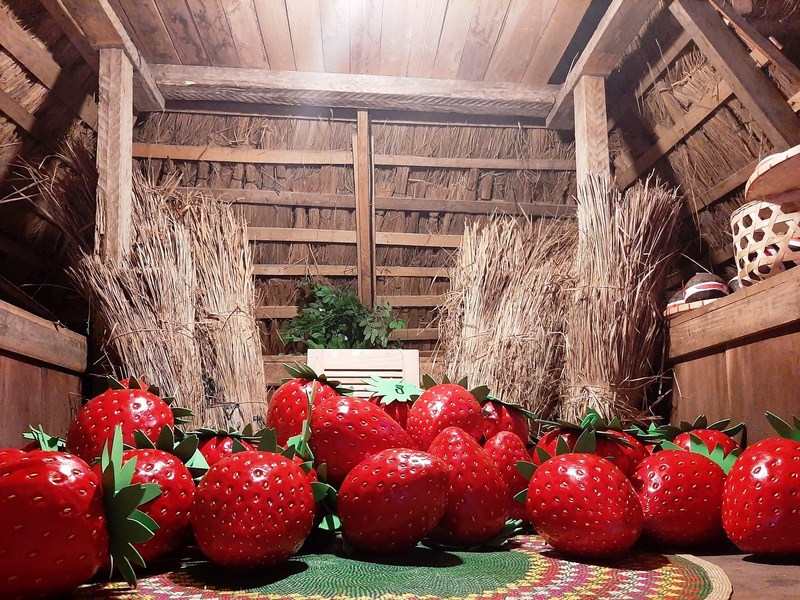
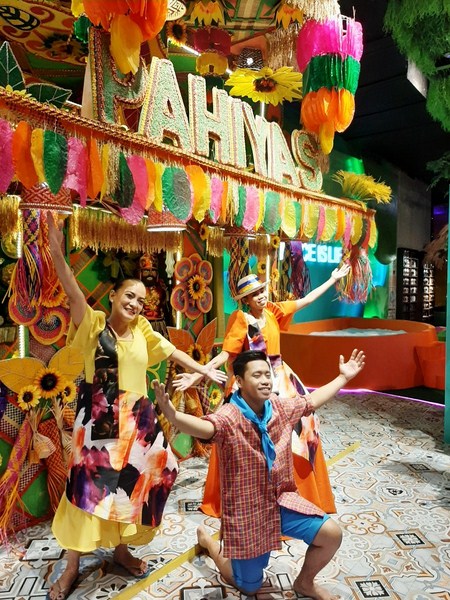
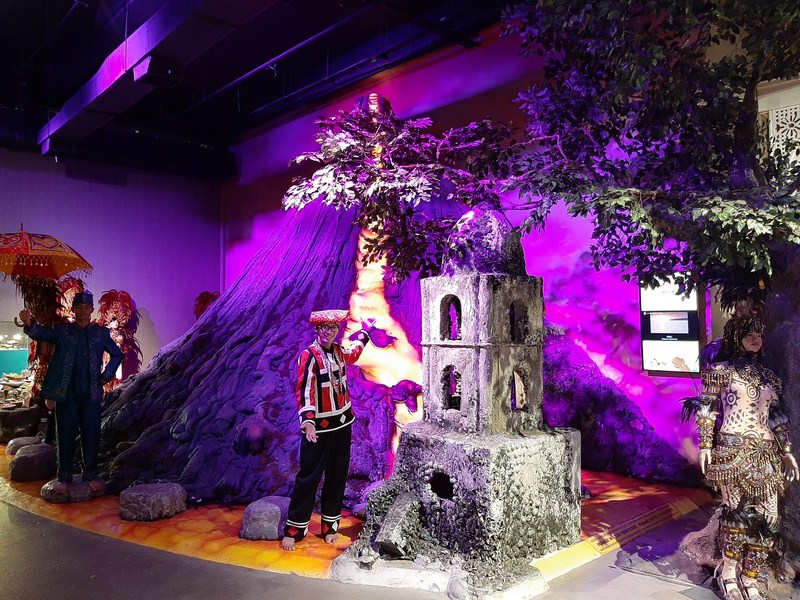
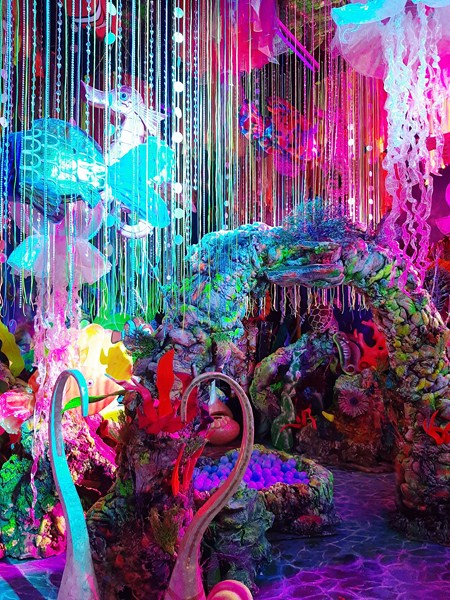
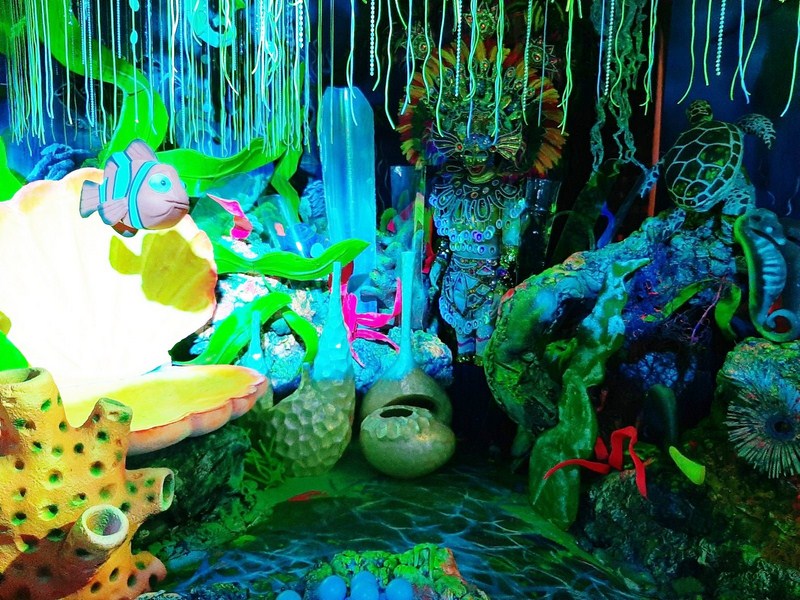

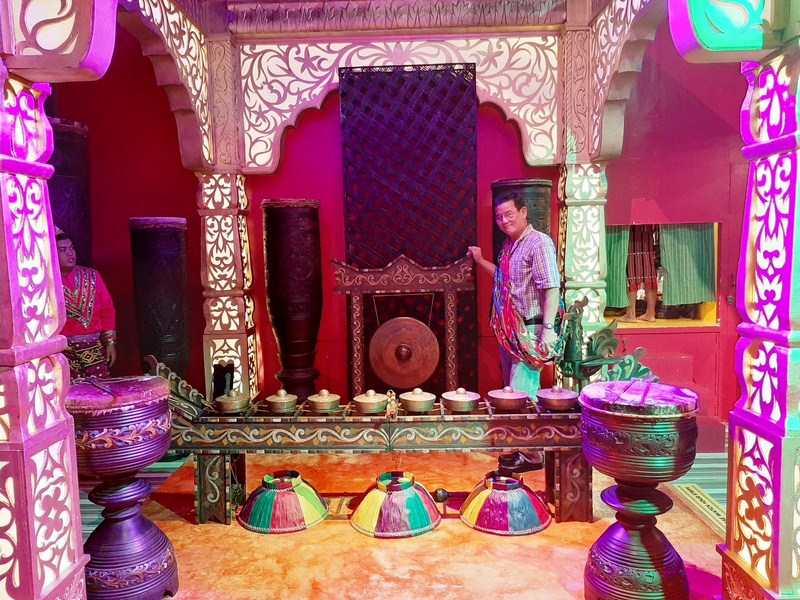
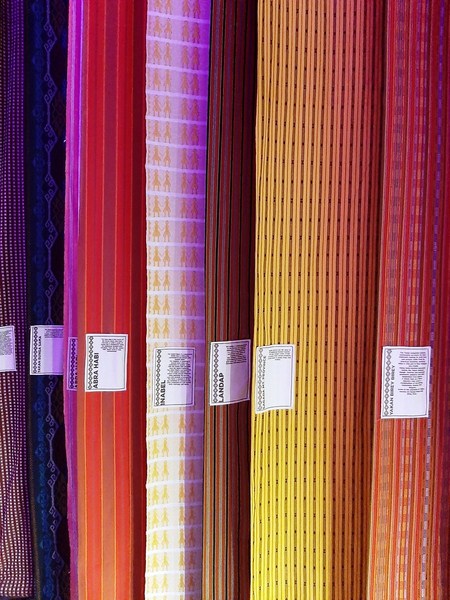
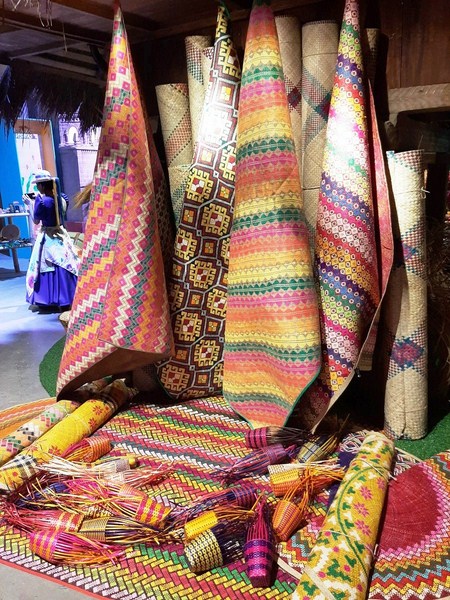
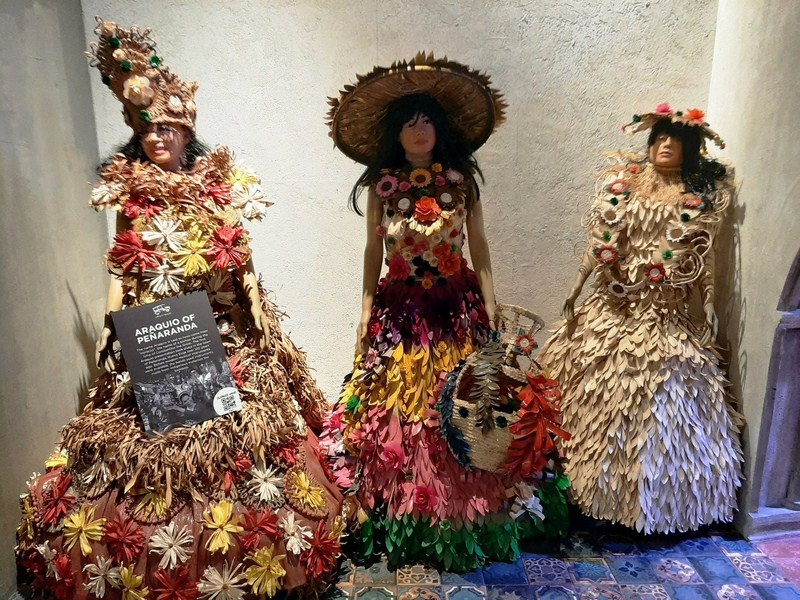
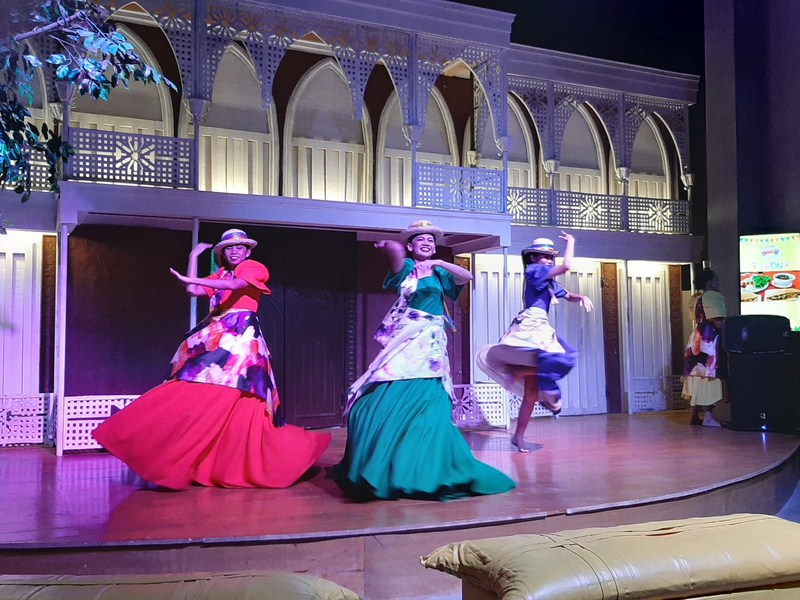

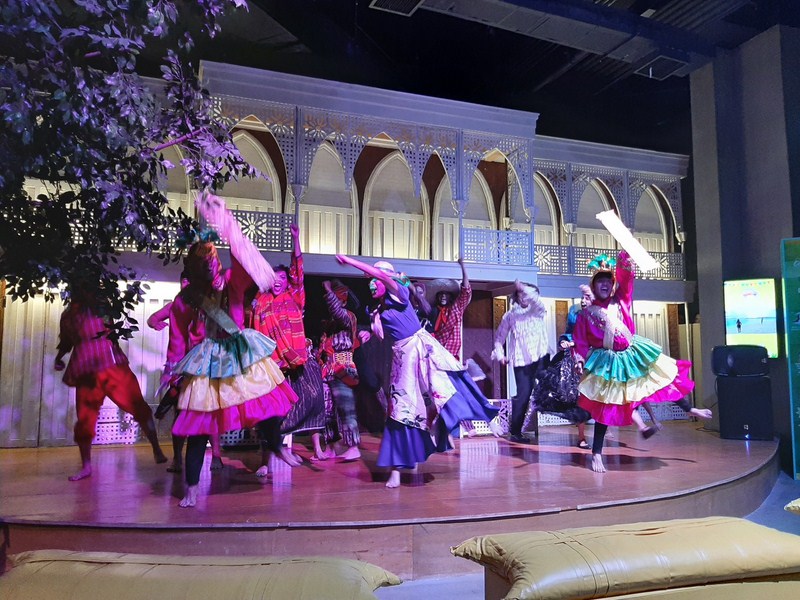
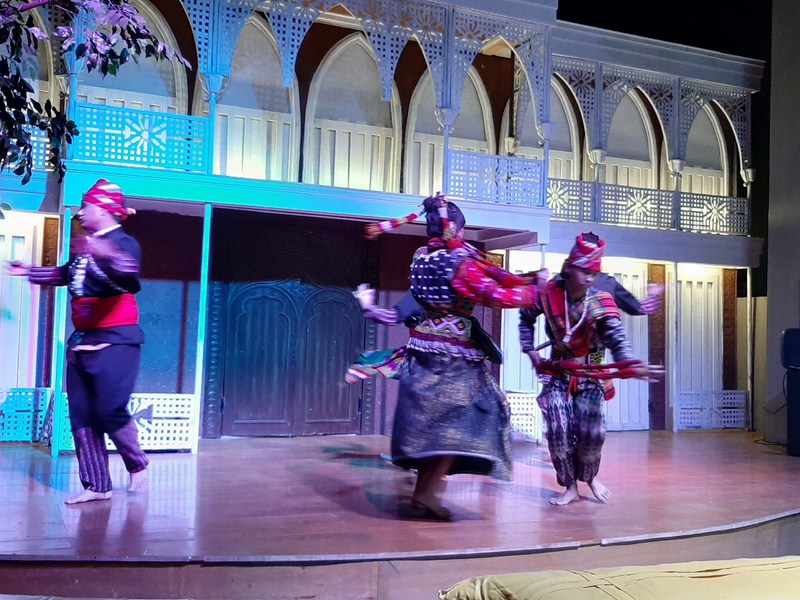
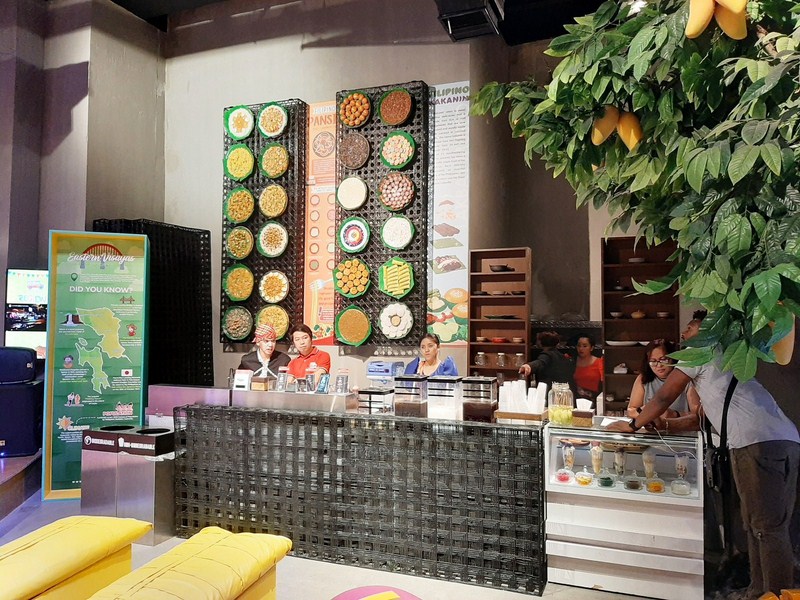
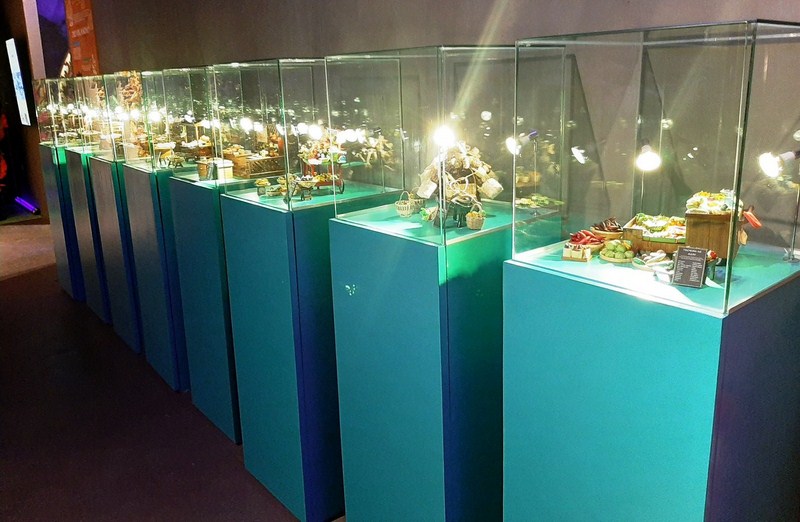
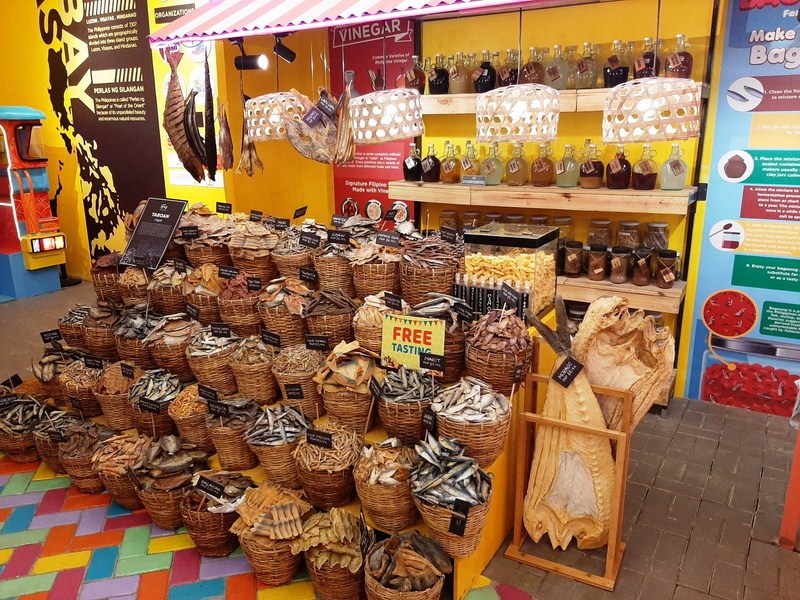
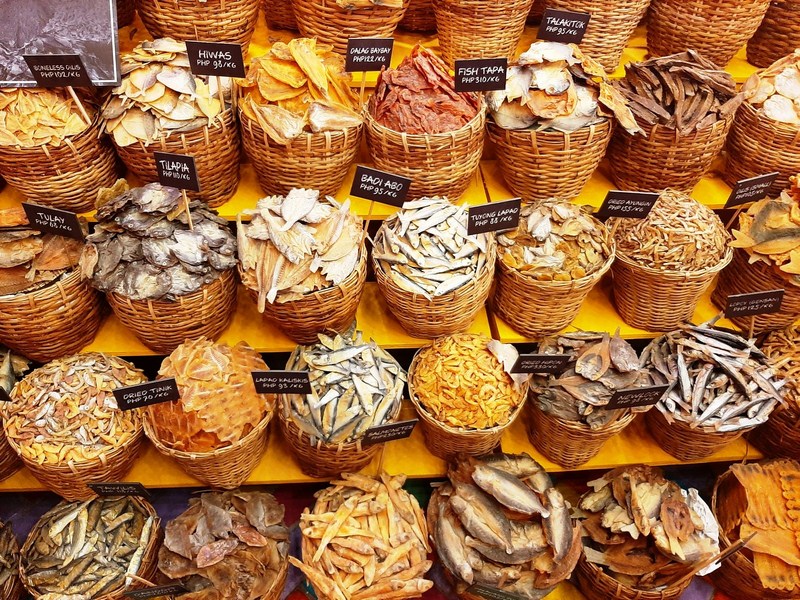

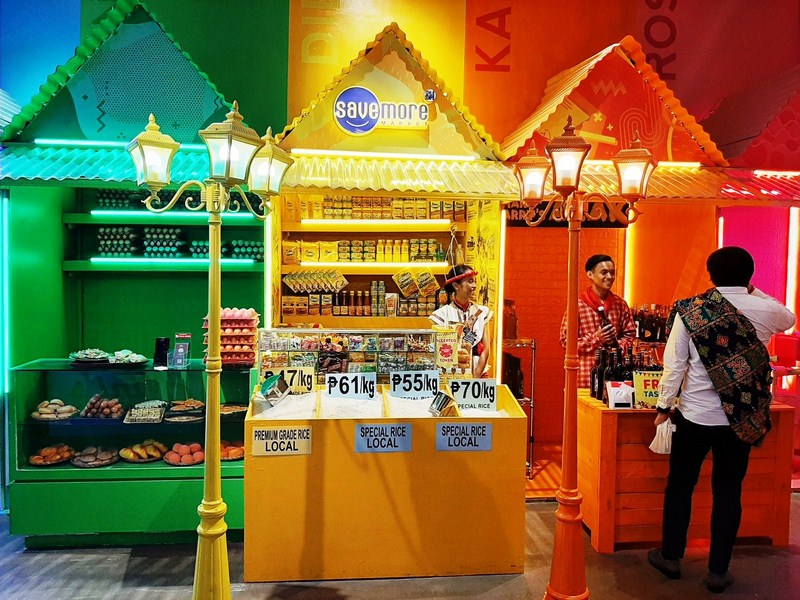
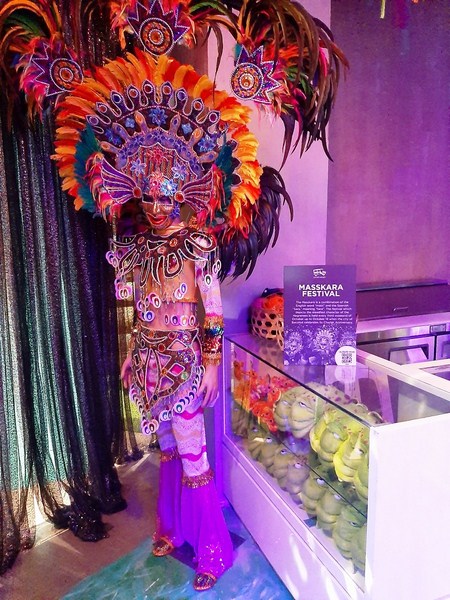
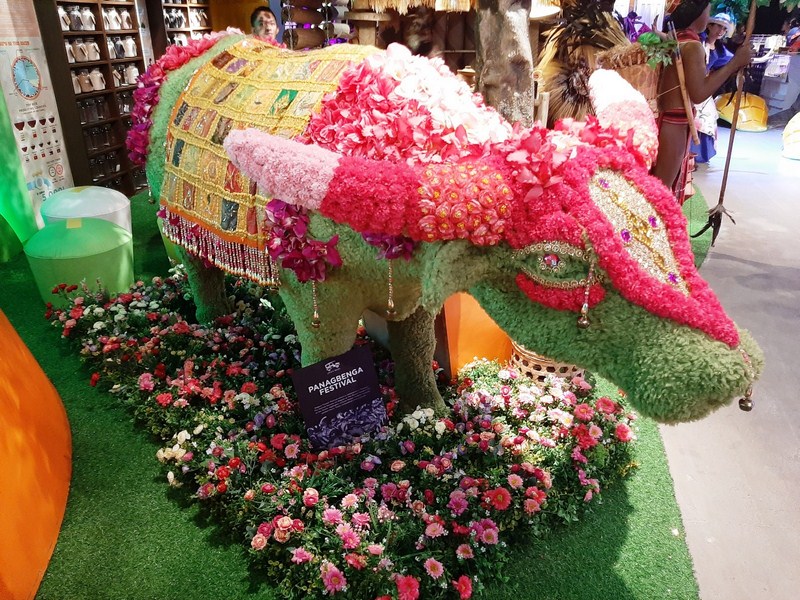
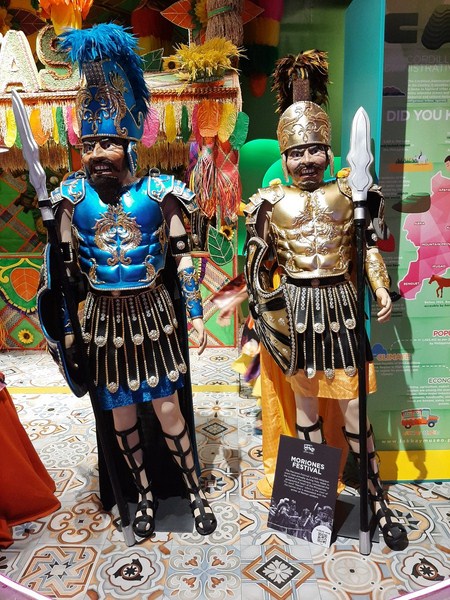
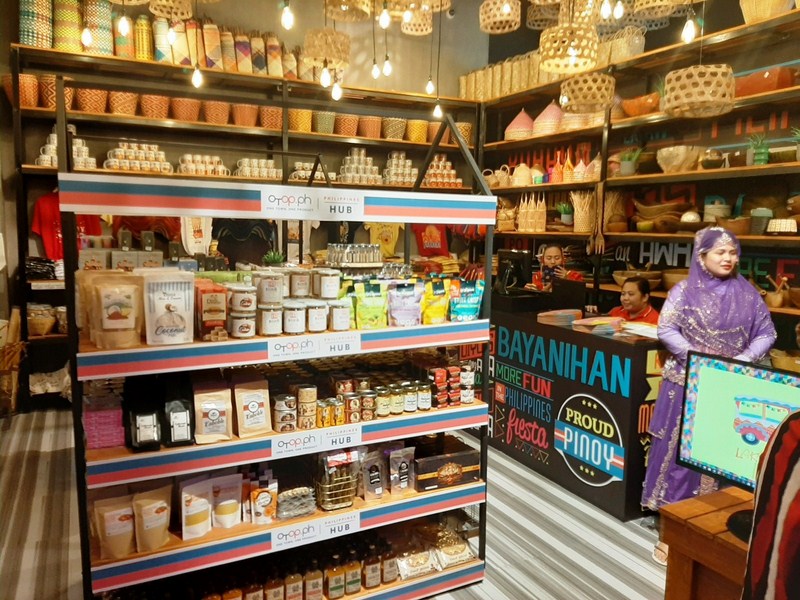

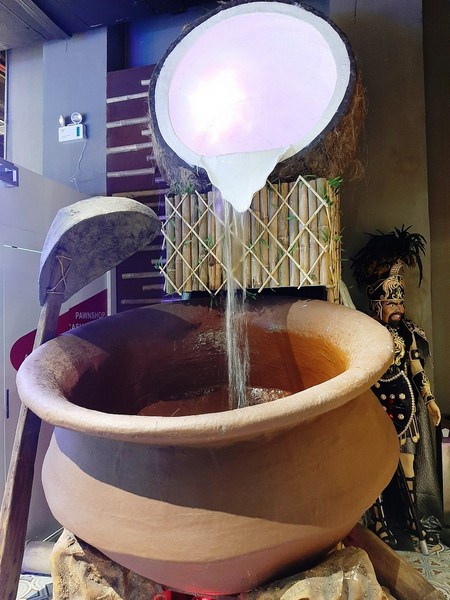
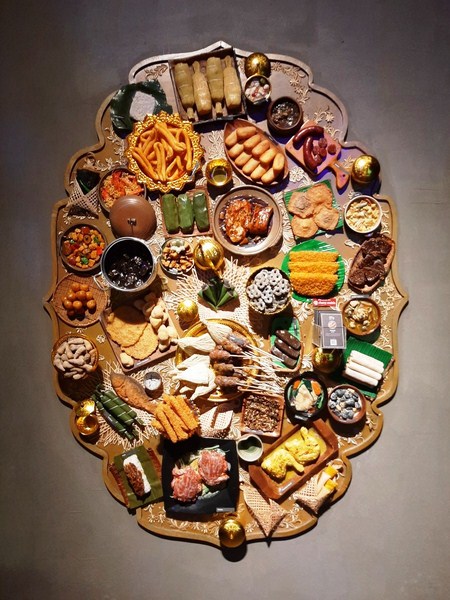
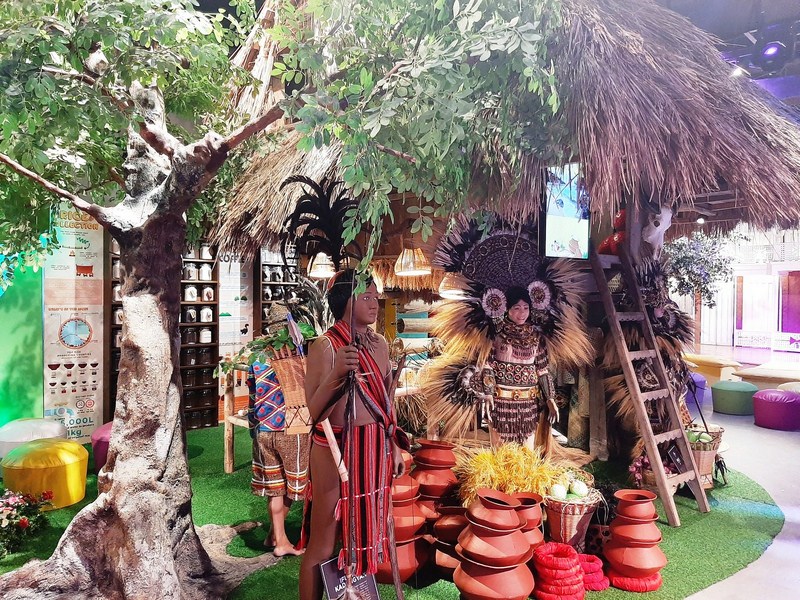
Hi Rich. Awesome beers from Joe s Brew! Thanks for the suggestion. I just focused on the places in the city for those who don t have a lot of time but I ll be writing a separate post on Day Trips near Manila soon. Will check out your page and hiking tours. For foreign tourists who may have a hard time commuting, joining day hiking tours near Manila might be a good option ?? Cheers!